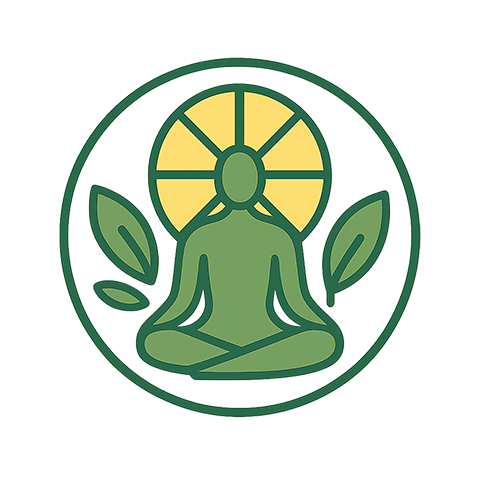Stretching and Nyújtás Digital Detox From Technology
In a world where screens glow brighter than the sunrise, the simple act of stretching—nyújtás in Hungarian—has become a quiet rebellion against constant connectivity. The rhythm of a daily stretch session can reorient the body, calm the mind, and create a space where technology is politely set aside, if only for a few minutes.
The Quiet Power of a Single Pose
When the phone buzzes in the corner of the room, the brain registers it as a signal to shift attention. A deliberate stretch interrupts this cascade. A forward bend, a shoulder roll, or a gentle twist invites the nervous system to release tension. In this brief pause, the mind can reset, much like a fresh page in a notebook.
- Inhale: feel the muscle lengthen.
- Exhale: let go of the digital urge.
- Repeat: reinforce the habit.
Technology’s Grip on the Body
Extended periods of typing or scrolling produce micro‑tendencies: cramped shoulders, stiff wrists, a forward‑tilted head. These postural shifts, when unaddressed, become chronic, making simple tasks feel burdensome. Nyújtás counteracts these changes by restoring balance. The body’s natural elasticity—its ability to stretch and return—serves as a buffer against the mechanical strain of prolonged device use.
“When I started incorporating daily stretches, my neck pain diminished and my focus sharpened. It’s a small act with a big payoff.” – Anonymous
Mindful Minutes: A Structured Detox
Digital detox doesn’t require a week‑long retreat; it can begin with 10 minutes of intentional stretching. Begin with a simple sequence: seated cat‑cow, seated twist, seated forward fold. These poses are easy to perform in a chair, making them accessible to anyone with a desk job. Over time, the routine can expand to include full-body stretches like lunges or yoga sun salutations.
From “Stretching” to “Nyújtás”: Bridging Cultures
Language often shapes how we perceive activity. In Hungarian, nyújtás carries connotations of both literal muscle lengthening and figurative flexibility—adaptability, openness. In English, stretching carries similar dual meanings, but the cultural baggage is different. Recognizing this nuance encourages a broader perspective: the practice is not merely physical; it is a cultural act that invites flexibility in thought and lifestyle.
- Recognize the cultural context of the term.
- Apply the practice in daily routines.
- Share the experience across language borders.
Reclaiming Presence
Each stretch moment can be a moment of presence. While the phone demands multitasking, a single deep breath followed by a controlled movement anchors attention to the body. This anchoring is a cornerstone of mindfulness, allowing a person to observe digital impulses without reacting. Over time, this practice cultivates a more deliberate relationship with technology.
Designing Your Personal Stretch Break
Consider the following steps when creating a personal stretch break:
- Set a timer: 5–10 minutes, repeated 2–3 times per day.
- Choose a quiet spot: away from the usual workstations.
- Use a reminder: a sticky note, an alarm, or a gentle notification.
Health Benefits Beyond the Desk
Regular stretching improves circulation, which enhances oxygen delivery to the brain, supporting cognitive performance. It reduces the risk of repetitive strain injuries and helps maintain a healthy spine alignment. For those spending long hours in front of a screen, these benefits translate into fewer headaches, less eye strain, and a more sustainable work pace.
Stretching and the Digital Brain
The brain’s plasticity—the ability to reorganize itself—can be guided by routine. Consistent stretching introduces new neural pathways associated with relaxation and focused attention. These pathways compete with the dopamine-driven cycle of notifications and scrolling, gradually shifting the brain toward a calmer baseline.
Integrating Stretching into a Broader Detox Plan
Stretching can complement other detox practices: reducing caffeine, establishing a nightly wind‑down routine, or spending time outdoors. Each element strengthens the other. When a body feels physically lighter, the urge to seek digital stimulation often lessens. Likewise, when mental fatigue recedes, engaging in a purposeful stretch feels more meaningful.
Creating Community Through Shared Practices
Workplaces can encourage group stretch sessions. Even a short 5‑minute break with the team fosters camaraderie, reduces stress, and signals a healthy culture that values well‑being over constant productivity. These group moments can evolve into informal clubs that meet weekly to explore new stretch sequences, breathing exercises, and even short meditations.
The Long‑Term Vision
Digital detox is not a one‑off event; it is a long‑term mindset shift. By weaving stretching (nyújtás) into daily life, individuals create a resilient buffer against the pull of technology. Over months, the body remembers how to relax, the mind remembers how to focus, and the relationship with devices becomes less automatic, more intentional.
Practical Tips for Sustained Success
- Keep a simple log: note the time, the stretch, how you felt afterward.
- Set incremental goals: add a new pose every two weeks.
- Celebrate milestones: a 30‑day stretch streak, for instance, can reinforce consistency.
Closing Thoughts
In a culture where screens dominate our attention, the humble act of stretching—nyújtás—offers a gentle reminder that our bodies and minds are not built for constant digital immersion. Each bend, twist, and reach invites us to pause, breathe, and reconnect with the present. By integrating this practice into our routines, we carve out moments of calm, reduce the physical toll of technology, and pave the way for a healthier, more balanced interaction with the digital world.


